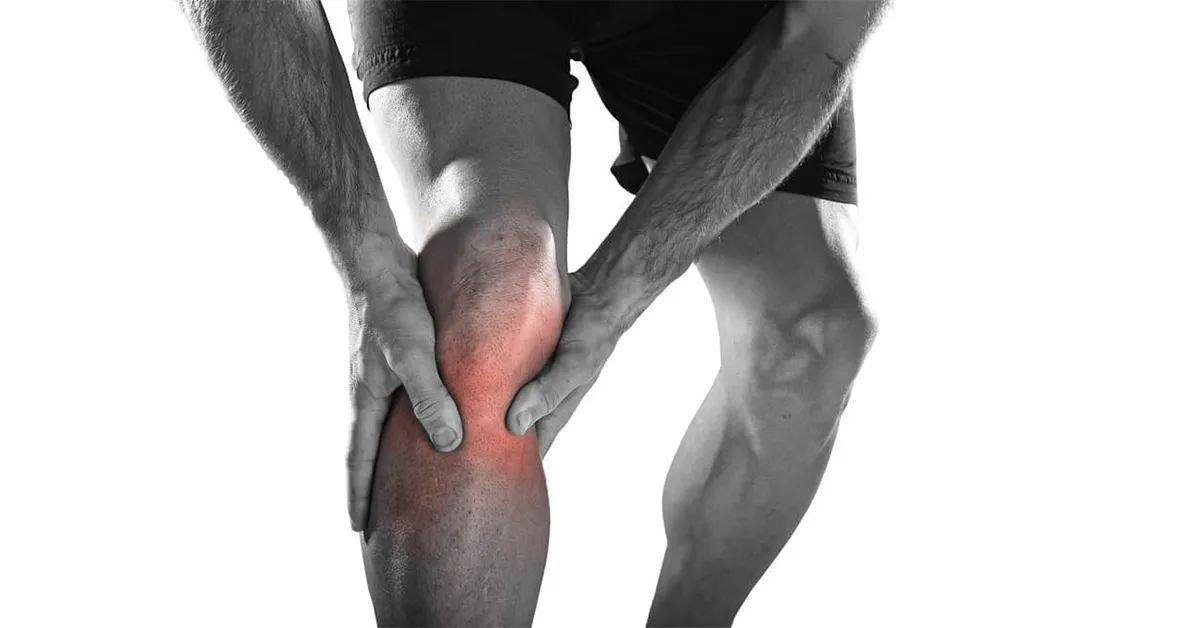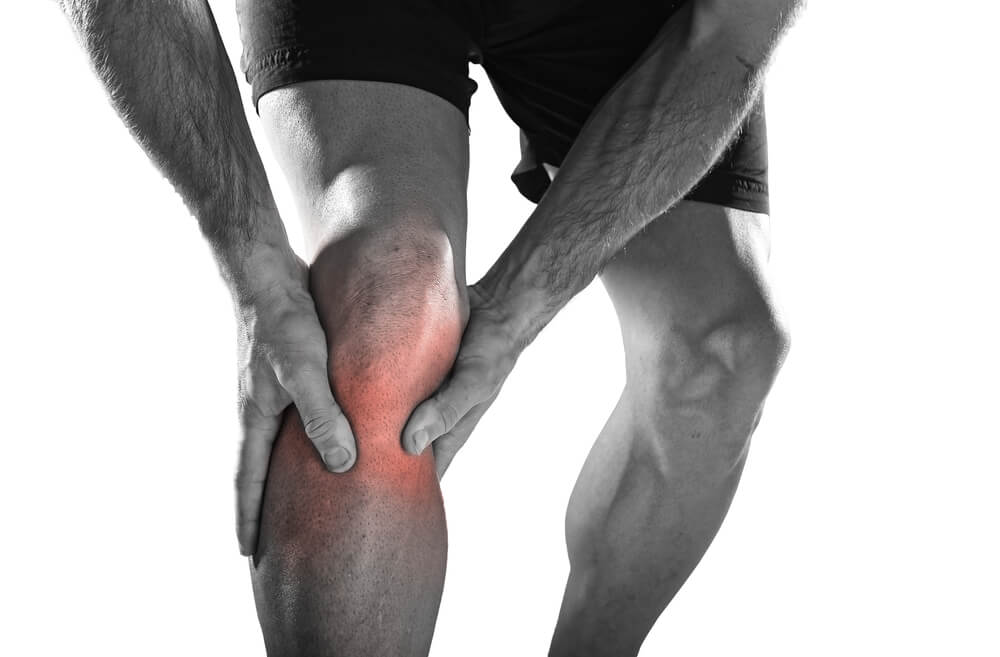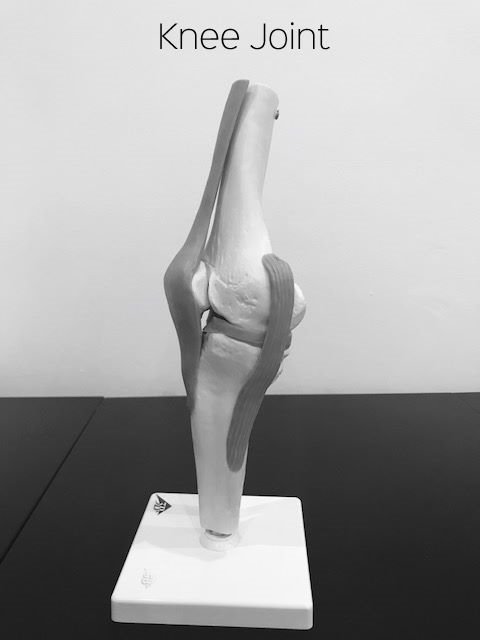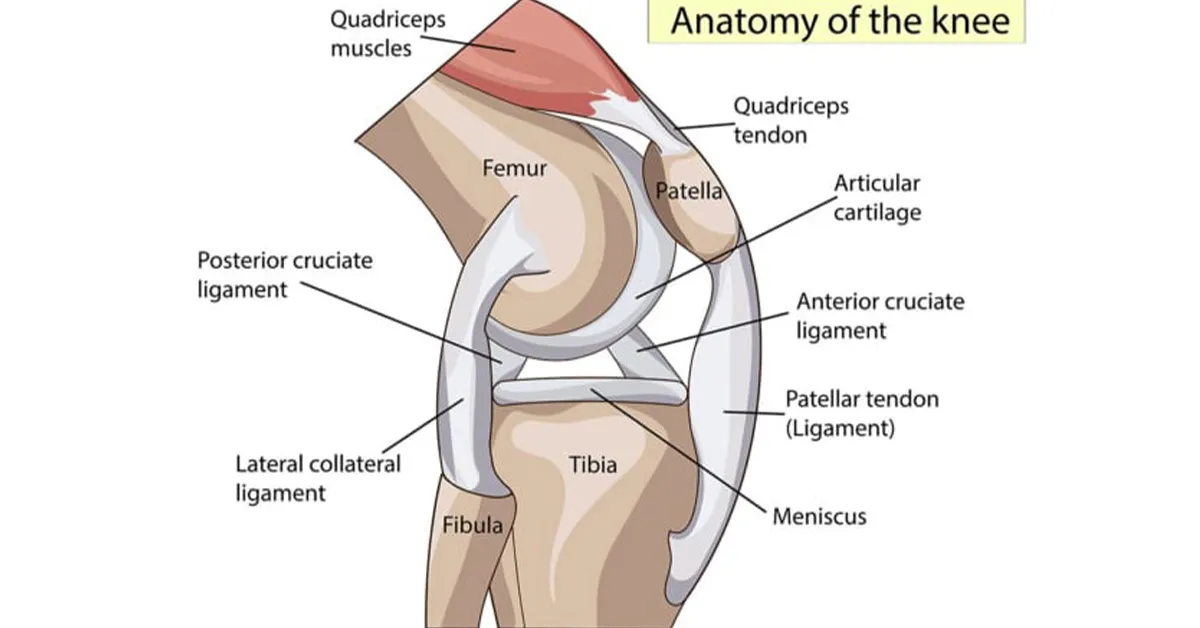What type of knee joint pain is the most common?
The knee is made up of three different joints and the most common knee pain is from the patellofemoral joint. However the knee joint (tibiofemoral joint) is what most people refer to as the knee and it has a number of common problems:
- Knee ligament sprains
- Meniscal injuries of the knee
Knee Pain- ligament sprains
There are four main ligaments in the knee. The medial and lateral collateral ligaments are on each side and the anterior and posterior cruciate ligaments. The picture shows the medial ligament vertically and the medial meniscus lining the surface of the joint.
How do you injure your ligaments?
All ligaments protect joints from excessive movement and they do this by providing early feedback for protection. If the movement is not altered and their tissue load capacity is exceeded then the ligament may be sprained. A sprain can be a minor injury with no structural loss of fibre alignment all the way to a complete rupture of the structure. But to injure the ligaments you need excessive force and that means you will be able to tell your physiotherapist a fairly good history of how and when it happened. The medial ligament is the most commonly injured and likely to cause knee pain.
Will the ligaments heal?
The collateral ligaments will generally heal well when given the right management. Collateral ligaments are external to the joint and not contained in a bag of synovial fluid. The cruciate ligaments in the center of the joint will not repair to the same degree and will often remain weakened. That sounds worse but the body, following the right rehabilitation, can often learn to compensate for the lack of a ligament. When there is instability of the joint and knee pain continues a ligament reconstruction is required.
What is the best physiotherapy for a ligament injury?
- Get the injury diagnosed correctly and starting the correct management of that injury from the beginning. With a correct diagnosis we can determine weather some bracing is needed before rehabilitation begins.
- Strengthening around the area and within the limb over a long period can aid recovery or prevent the need for surgery in some cases.
- Restore proprioception (the feedback ability of the tissues around the joint) to aid control of movement.
Knee Pain- meniscal injuries
The menisci of the knee are shock absorbers. They provide joint integrity, aid stability and shock absorb significant forces. Menisci move slightly during weight bearing and twisting activities. Activities commonly found in sport can often trap or tear the menisci. The menisci can often tear naturally with age and show no symptoms. To tear your meniscus during an acute structural overload it will create pain and swelling (effusion) within the joint. If the tear is minor and does not block the structural movements of the knee. Then time and physiotherapy will likely resolve the problem. If the tear is large and blocks the normal function of the knee joint then surgery may be required.
What is the best physiotherapy for a meniscal injury?
- Correct early injury management. Get your knee injury diagnosed correctly from the beginning from an experienced and qualified physiotherapy. See our blog on choosing a Physiotherapist.
- It may need or may not need a scan to determine the damage to the mensicus.
- Add strengthening exercises to your fitness regime for the knee and limb. Exercise you can progressively add loading. During recovery the tissues will often settle the pain and allow a full return to activity.
- Add proprioception and functional exercises to ensure that you do not over protect the knee.
Physiotherapy management of acute knee pain- what should you do?
If the injury occurred within the last 48 hours then do the following:
- Ice therapy is important to manage the pain and limit swelling. Here is our blog on icing effectively.
- Move the knee through its full range of movement gently.
- If you are struggling to weight bear then a stick or crutches may be appropriate.
- Start some simple quadriceps exercises.
For further advice on knee pain see the Chartered Society of Physiotherapy website and our blog.
If you would like a diagnosis for your knee pain and a planned rehabilitation strategy then give us a call at Physis Physiotherapy on 0131 478 4646 or book an appointment online.




